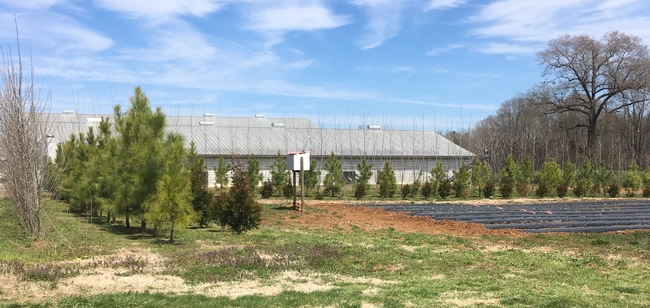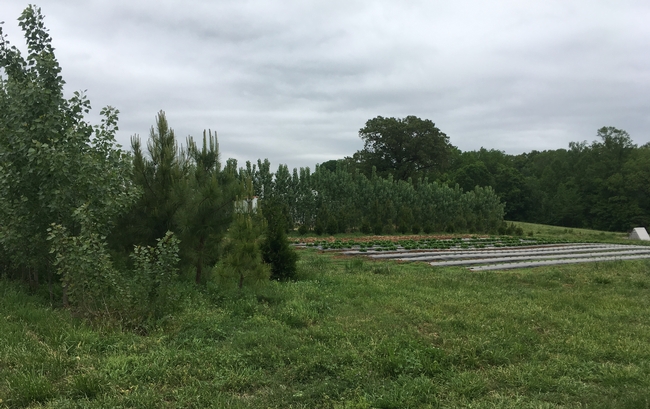Approximately 48 million people are sickened by foodborne illnesses leading to 128,000 hospitalizations and 3,000 deaths every year, according to the CDC estimates. A foodborne disease outbreak occurs when two or more people get the same illness from the same contaminated food or drink. Since most foodborne disease outbreaks can be traced back to contaminated fruits and vegetables, especially leafy greens, the disease burden has been a topic of concern for the agricultural industry and the public. Bacterial pathogens like Escherichia coli (E. coli), salmonella and campylobacter are among the common causes of the reported foodborne disease outbreaks.
How can we prevent foodborne pathogens from contaminating fruits and vegetables?
Before we can explore answers to the question of preventative measures, we must step back and ask a similarly important question: How do these foodborne pathogens contaminate the fresh produce to begin with? Understanding the different ways in which contamination occurs is imperative in exploring effective prevention measures and solutions.
So, how do foodborne pathogens like salmonella and E. coli get into our fruits and vegetables and why is there an increase in the observed foodborne disease outbreaks? Well, we can loosely attribute the general public's rejuvenated interest in consumption of fresh produce grown with sustainable or organic methods as a plausible explanation for the observed increase in foodborne disease outbreaks.
Integration of livestock and crop production as a sustainable farming practice has been speculated to be a significant contributor to the increasing numbers of outbreaks, with some research studies affirming the speculation. One such research study, conducted by North Carolina State University, showed that there was indeed significant transmission from animal operations to the fresh produce on sustainable farms. In general, contamination of fresh produce by foodborne pathogens can occur through multiple pathways including the following:
- Environmental sources such as contaminated runoff surface water
- Insect transmission and air transmission due to proximity of farm animals to fresh produce
- Contaminated manure and water irrigation systems
- Improper food handling
Some of these foodborne pathogens are resistant to antibiotics, which means that even a small case of food poisoning could become fatal, hence the need to find mitigation strategies against foodborne disease outbreaks. One solution that has been proposed is using vegetation barriers to reduce transmission of foodborne pathogens like E. coli and Salmonella on sustainable farms.
Use of vegetation barriers to mitigate transmission of foodborne pathogens on sustainable farms
Vegetative barriers are narrow and parallel strips of stiff and dense vegetation planted on or close to the contour of slopes or across concentrated flow areas. Vegetative barriers slow down runoff water and even filter it out to some extent. They also loosen and improve the soil, which allows for more water retention in the ground. Since foodborne pathogens like E. coli and salmonella can contaminate fresh produce through wind transmission and through runoff surface water from animal farms, planting vegetation barriers can effectively reduce flow of runoff water and act as a wind barrier that traps spray droplets from animal operations, intercepting foodborne pathogens and preventing them from reaching fresh produce farms.
A recent study from North Carolina State University showed evidence of decreased rates of contamination of fresh produce by foodborne pathogens, specifically E. coli and salmonella, from animal operations when vegetation barriers were employed. For this study, a five-layer vegetative barrier (31x49 m) was constructed between a dairy farm, a poultry farm, and a nearby fresh produce farm. Fresh produce, animal fecal excrement and environment samples were collected during the next 15 months and tested for the level of salmonella and E. coli contamination.
The NC State results showed that only 18% of the total E. coli and salmonella samples isolated were present in the fresh produce after installation of the vegetative barriers. Their results confirmed the effectiveness of using vegetative barriers to reduce foodborne pathogen transmission.
It is important to note, however, that while vegetative barriers might be a good measure for lowering transmission by wind and runoff surface water, other transmission pathways like using contaminated manure and improper food handling can still lead to contamination regardless of whether vegetative barriers are present or not. In such scenarios, other mitigation measures are vital.

